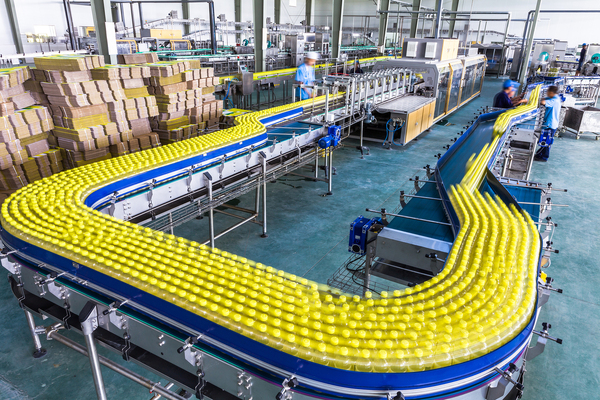The Business Continuity emergency

Johnny Carpenter at 11:11 Systems explores the implications of global climate change and the ongoing energy crisis on UK businesses
Recent years have marked a dramatic step change in global climate conditions, with a significant increase in the incidence and severity of extreme weather events resulting in flooding, hurricanes and heatwaves across the globe.
The UK and Europe experienced the hottest summers on record during the past three years. This year’s extreme, record-breaking heatwave in July took the UK climate beyond 40 degrees Celsius, and posed serious threats to UK infrastructure.
This ongoing and accelerating trend is now sadly locked into the Earth’s system for decades to come. In Western Europe, heatwaves are increasing in frequency, at about three times faster, and in intensity, four times greater, than in other mid-latitude regions according to a recent study.
This is having a knock-on impact for business, as evidenced by July’s West London data centre outages for Google and Oracle Cloud and heatwave related IT issues for NHS Trusts. The need for C-suites to consider climate-related events as a serious risk to business continuity can no longer be seen as a problem of the future.
But climate-related events are not the only threat on the C-suites agenda right now. The ongoing energy crisis and reports of potential blackouts later this year and into early next year pose an imminent threat to business continuity and spark the need for urgent action and planning to maintain operational resilience.
The cost of inaction
For organisations globally, whether it is caused by extreme weather events or geopolitically fuelled energy crises blackouts, the threat to business continuity is significant and growing. Be it a blackout, or even the complete destruction of IT infrastructure, the costs of redundancy of power and systems cannot be underestimated.
In a recent survey, 91% of organisations associated a single hour of downtime to more than £300,000 in damages — an estimation that only continues to rise, and which spells out not just revenue loss but business closure for the vast majority.
A loss of data for ten days has driven many otherwise robust businesses to bankruptcy in recent years. Therefore, the predictions of a reasonable worst-case scenario potentially resulting in a UK wide four-day blackout this winter is a serious threat not only to business continuity, but the entire organisation.
Today, to sidestep the devastating impact of data loss and protect your critical applications from unplanned downtime, having a disaster recovery plan in place is a fundamental necessity that could mean the difference between survival or closure. Disaster-Recovery-as-a-Service (DRaaS) enables organisations to replicate all IT workloads and applications from public or private clouds, for both virtual and physical environments at a highly effective price point.
It takes just one incident to cripple an organisation. So, a tested business continuity plan is a vital step to ensuring the long-term viability for your business.
Future proofing with disaster recovery
Disaster recovery is a critical area of IT infrastructure security, which seeks to cover critical applications and data from the impact of unpredictable events like hardware failure, cyber crime, and natural disasters. It enables businesses to maintain data and vital functions when such incidents occur.
It is important to sync disaster recovery plans to your business’ requirements. In protecting mission-critical functions, IT leaders must assess and factor in how much data could be lost, as well as the eventual impact and cost to both the business and clients. It includes replicating IT workloads and applications for both physical and virtual environments. Many businesses can choose to begin the process by looking at the planning and implementation practices in the cloud and enlisting a cloud service provider from the outset.
Preparing your business for disaster events
From design through to implementation, businesses should look for an experienced disaster recovery partner that provides an end-to-end service, capabilities and support and, as priority, a flexible and individual solution to meet the specific recovery requirements of the business.
Disaster Recovery as a Service (DRaaS) enables organisations to replicate all IT workloads and applications from public or private clouds, for both virtual and physical environments. Built-in security and data protection can be customised according to business requirements and the specific geographical conditions.
Legacy systems must also be factored in, with partners that can provide guidance on whether it is preferable to relocate to the cloud, or to collocate. The right partner will look to model your environment, to ensure application performance requirements are met before DRaaS deployment.
Simple cloud management that provides detailed security, compliance performance updates and billing information is also critical. Therefore, organisations should look for a platform that provides unified management, control and visibility across all applications and resources. Additionally, a platform that can deliver seamless integration and experience across software solutions like Veeam and VMware, as well as comprehensive security and, critically, compliance directly into your console.
Finally, a simplified recovery strategy and capability, that enables the business to restore from backups and replicate data to another secure cloud, is essential. This will enable the organisation to trigger a live ‘failover’ in their environment when disaster hits. Here, a multi-cloud strategy and a provider that optimises network flexibility is the best option, as it will enable continued network access for end users during a failover event or network downtime.
Beyond this, multi-layered security that can be purpose-selected across the recovery environment and can be directly integrated into your console for ease of use and visibility, will enable authentication, identification of vulnerabilities, encryption and security threats, and easy on-demand reporting.
Incidents can happen any time – day or night
A final point to consider when selecting a disaster recovery partner is whether they provide robust around-the-clock support engineers. From on-boarding to ongoing operations and, should the worst happen, failover, it is essential to have access to an experienced team who can guide you every step of the way, resolving issues quickly and with minimum impact to business.
With the newly mandated climate related disclosure now moving to the top of the boardroom agenda in the UK, demonstrating this capability will become the yardstick by which clients measure partners, and a fundamental premise of future business success.
Johnny Carpenter is Vice President of Sales EMEA at 11:11 Systems
Main image courtesy of iStockPhoto.com

Business Reporter Team
Related Articles
Most Viewed
Winston House, 3rd Floor, Units 306-309, 2-4 Dollis Park, London, N3 1HF
23-29 Hendon Lane, London, N3 1RT
020 8349 4363
© 2025, Lyonsdown Limited. Business Reporter® is a registered trademark of Lyonsdown Ltd. VAT registration number: 830519543





